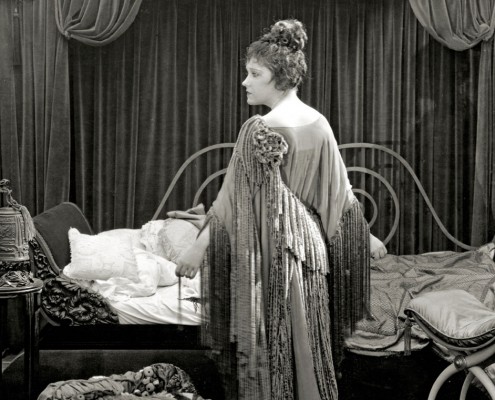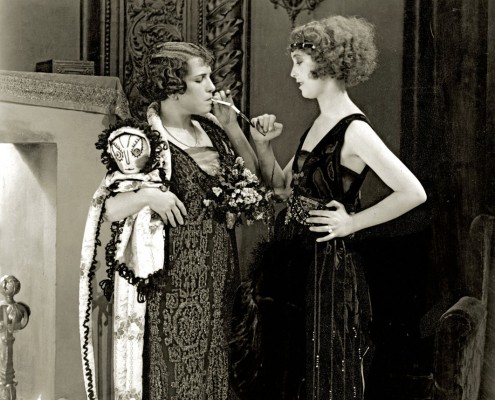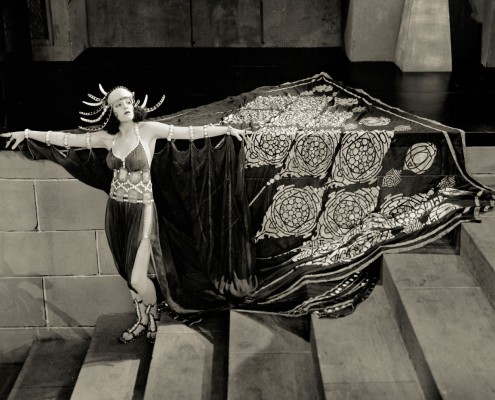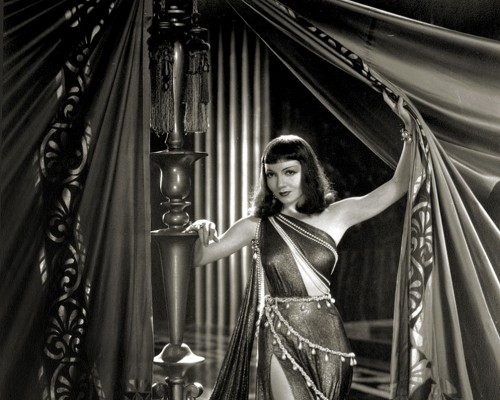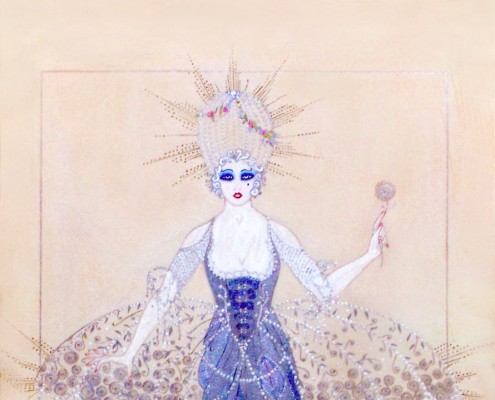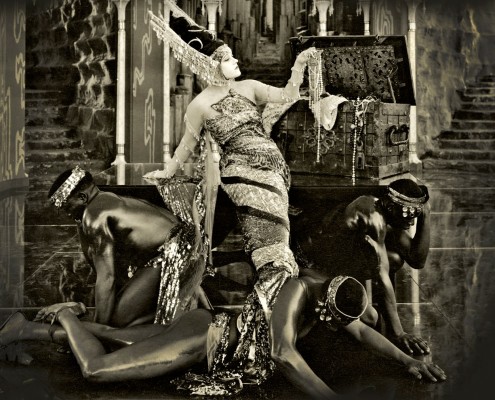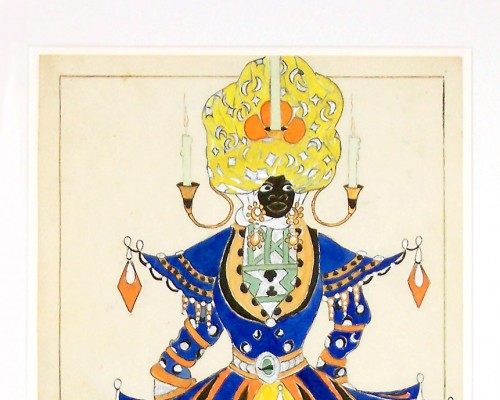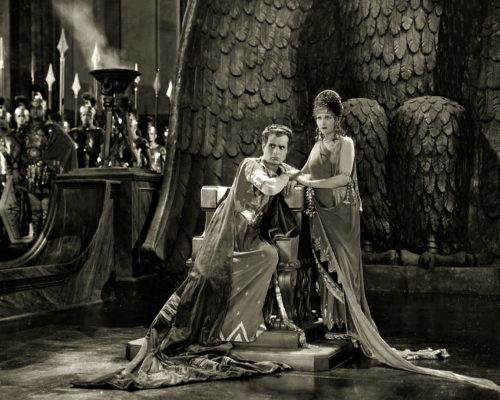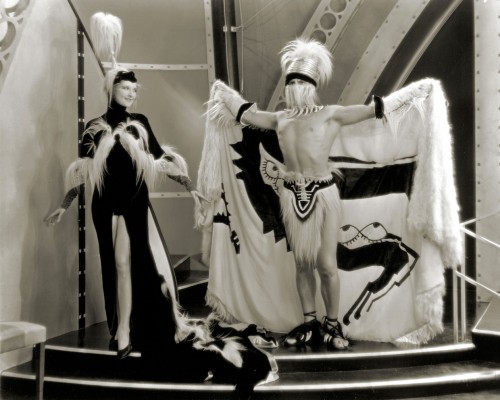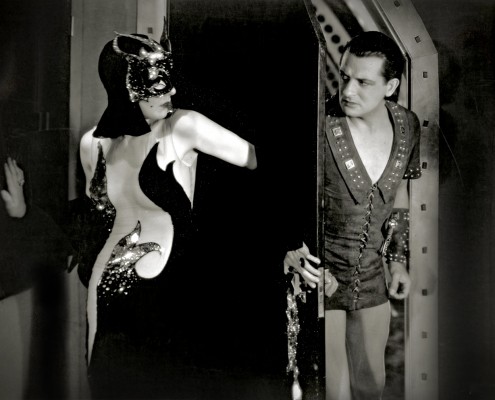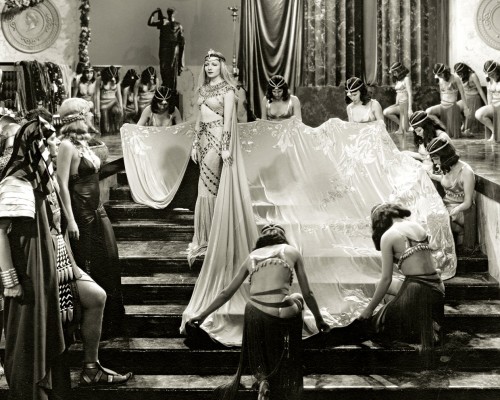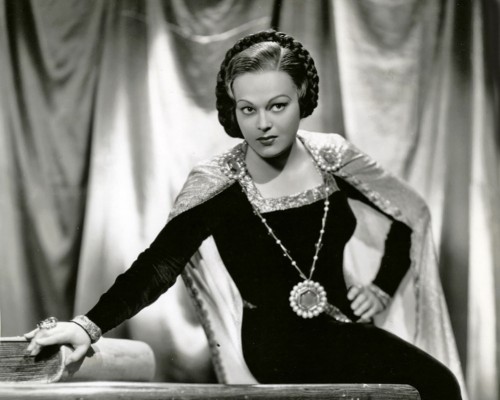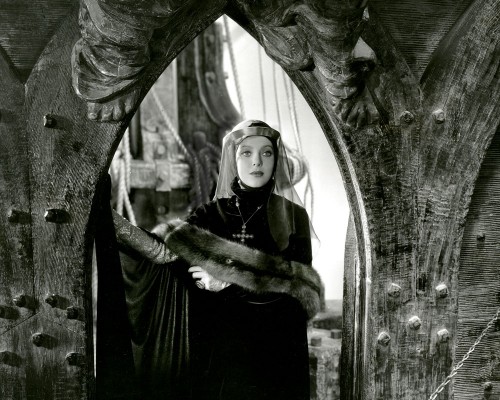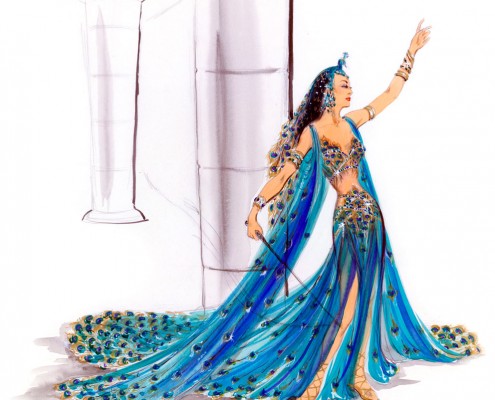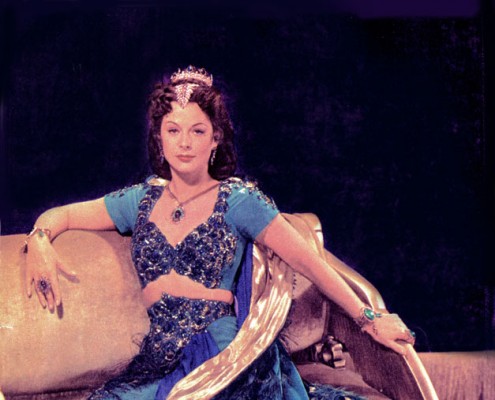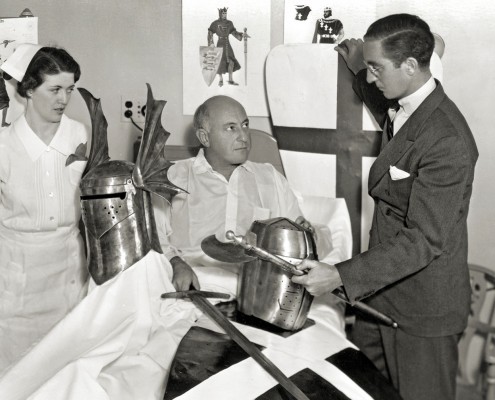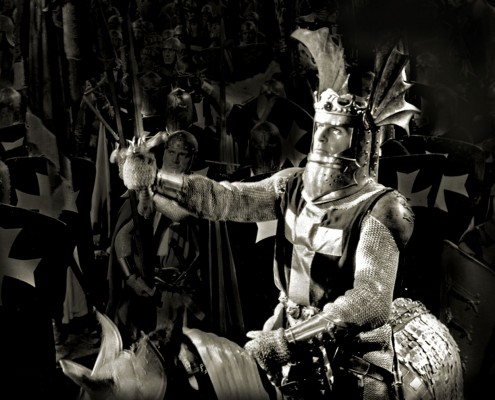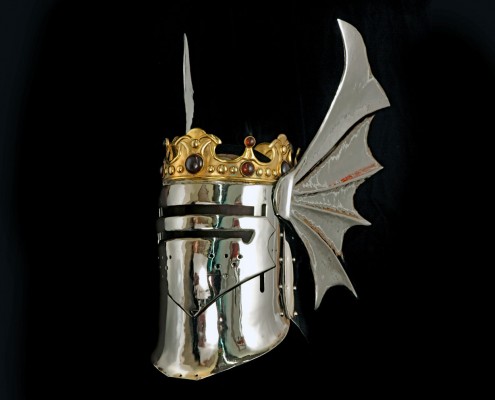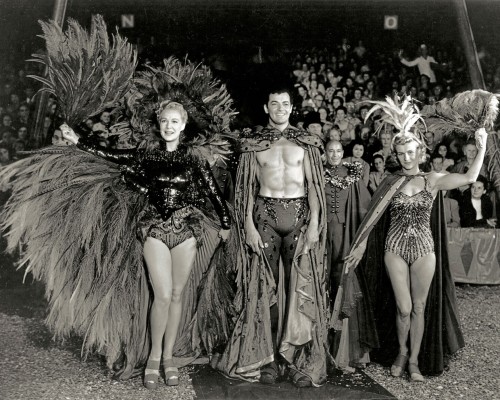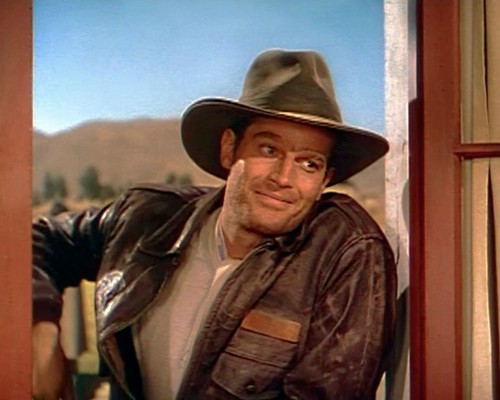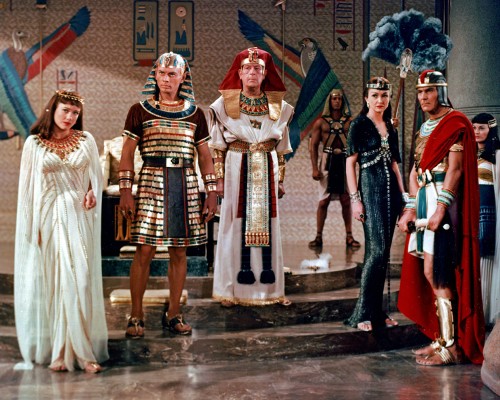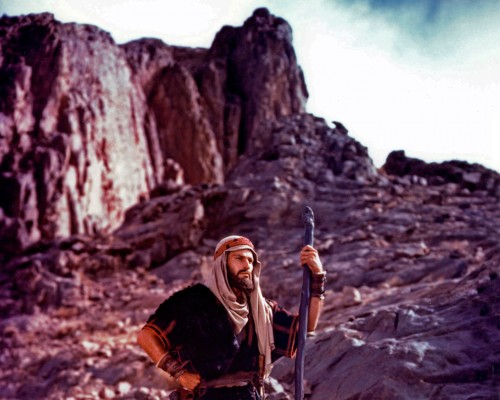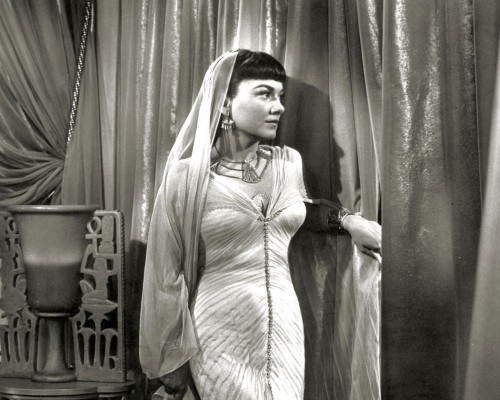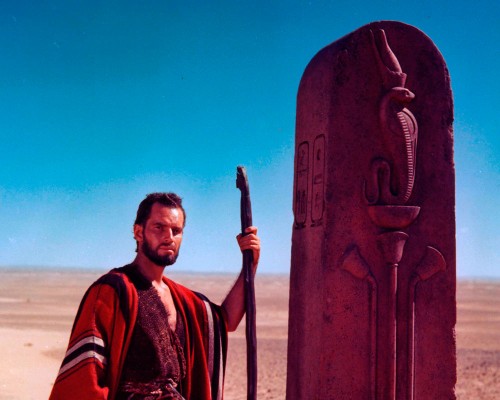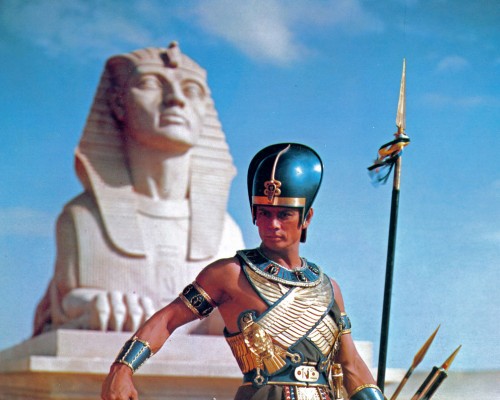Costumers
DeMille realized early that the costumes worn by players in his films could do more than project the personality of the character being portrayed. They could reach into the marketplace. There was a new consumerism in America after World War I, and it welcomed DeMille’s displays of elegance and glamour. His films began to influence fashion trends. For the first time, high fashion was as conscious of Hollywood as it was of Paris.
In 1914 Cecil B. DeMille wrote most of his early films but soon saw the need for a staff. He hired a well-known playwright to be both the company’s story editor and story department—his brother William de Mille. The brothers worked well together, crafting the series of hits that led the Lasky Company to become Paramount Pictures. After five years and ten films, William felt the need to strike out on his own. He enjoyed more than a decade as a respected writer-director.
The visual artist who was most influenced by DeMille and who most benefited DeMille’s films would surely be Mitchell Leisen. Referred by Jeanie Macpherson, he came to DeMille almost on a bet, since his background was not in costume design but in architecture. Before leaving DeMille fourteen years later, he worked as costume designer, set dresser, draftsman, art director, and assistant director.
This designer was born Winifred Shaughnessy, became Winifred Hudnut when her mother married the cosmetics magnate Richard Hudnut, and became Natacha Rambova to dance in Theodore Kosloff’s Imperial Russian Ballet Company. Kosloff introduced her to DeMille, who hired her as a first-time designer. She later designed for films starring her husband Rudolph Valentino.
Gilbert Adrian joined the De Mille studios in 1925. Adrian had been designing for stage productions since 1921, including George White’s Scandals and Irving Berlin’s Music Box. Adrian’s film work had begun in 1922 with Distinctive Pictures, and continued with gowns for Constance Talmadge at First National and Mae Murray at Tiffany.
In 1924 a contract with Rudolph Valentino’s Ritz Carlton company brought Adrian to Hollywood. When his costumes distinguished a 1925 stage prologue at the Hollywood Egyptian Theatre, he received offers from William Fox, First National, and Metro-Goldwyn-Mayer. He chose to work for DeMille because the producer-director would give him artistic freedom.
Adrian worked happily with DeMille until 1928, when the company moved to M-G-M, and Adrian was offered the job of designer at that studio. When DeMille returned to Paramount in 1932, Adrian remained at M-G-M, becoming the best-known costumer of Hollywood’s glamour years.
DeMille neither hired nor mentored Travis Banton, who was a powerful executive at Paramount when DeMille returned there in 1932. Banton only designed gowns for two DeMille features, Cleopatra (1934) andThe Crusades (1935), but Banton’s masterly work on these films merits inclusion.
When DeMille embarked on his string of historical epics at Paramount, Edith Head was an assistant to Travis Banton. After Banton’s 1937 departure, Head became head designer. Even so, she only worked on only two DeMille projects, Samson and Delilah (1949) and The Greatest Show on Earth (1952); these were hugely successful projects. Edith Head received an Academy Award® for her work on Samson and Delilah. She shared the award with Dorothy Jeakins, Elois Jenssen, Gwen Wakeling and Gile Steel, but she is acknowledged as the sole designer of the famous peacock cape.
DeMille brought the Yale graduate Ralph Jester into the DeMille unit at Paramount during the making of Cleopatra. Twenty-five years later, Jester had graduated to unit director. He worked with DeMille through his last productions.
Educated at Otis Art Institute, Jeakins entered the film industry on the strength of fashion illustrations done for the I. Magnin department store. She joined DeMille’s staff for Samson and Delilah (1949) and continued through the preproduction of The Ten Commandments (1956).
The most costly film of its time mandated a team of designers.
- Dorothy Jeakins
- Edith Head
- John Jensen
- Ralph Jester
Other Notable Costumers
- Natalie Visart
- Elois W. Jenssen
- Gile Steele
- Gwen Wakeling

